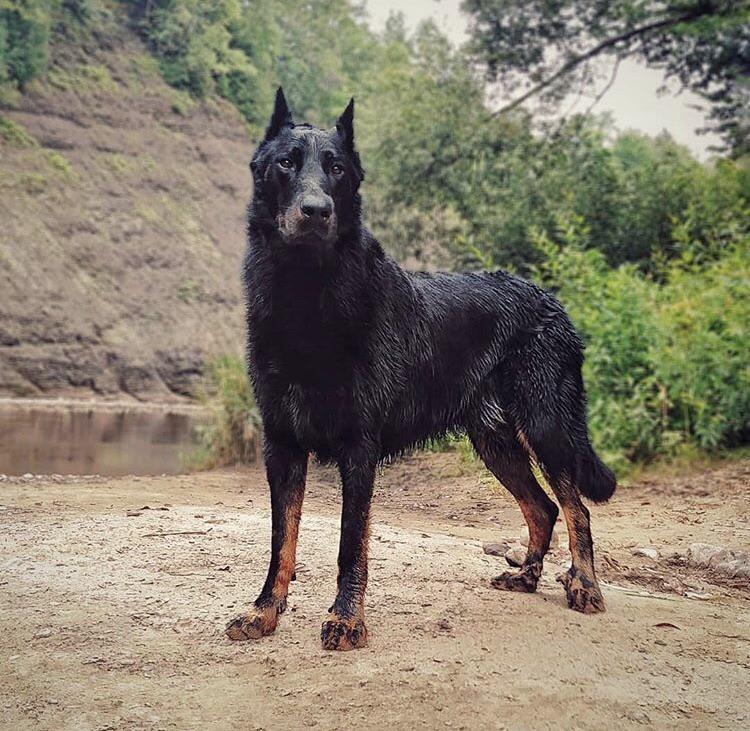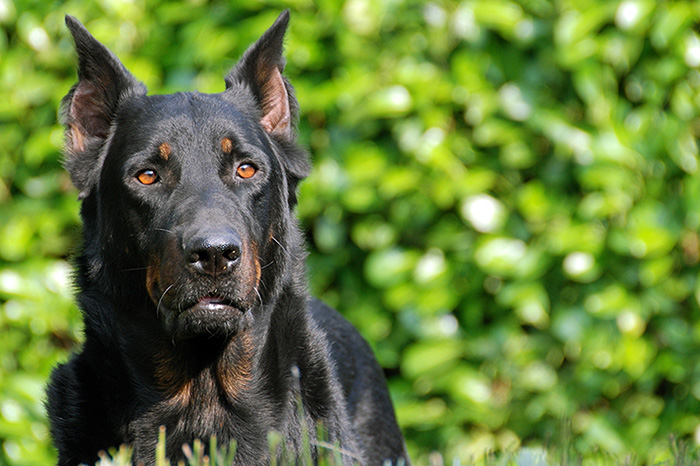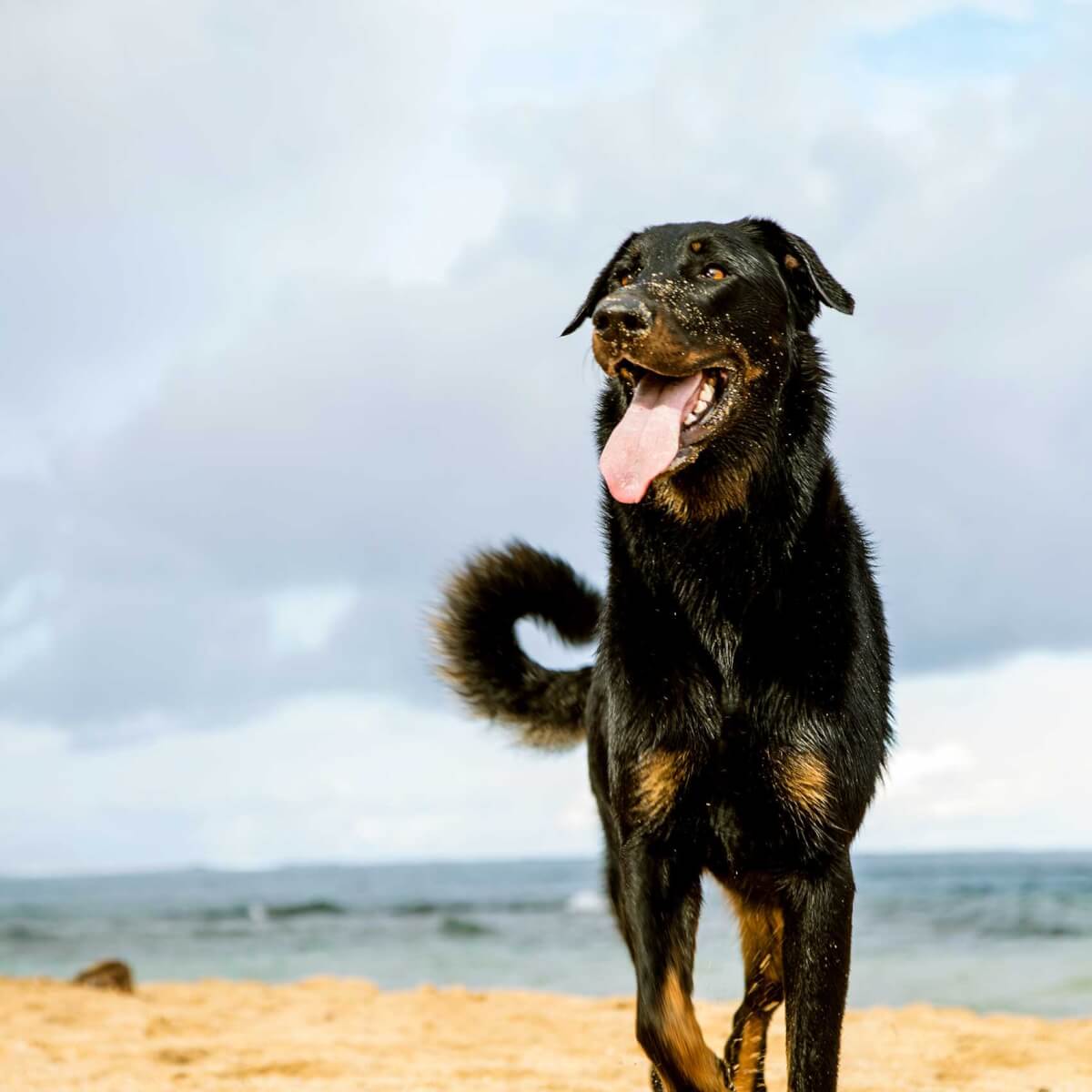Other names: French Shorthaired Shepherd, Beauce Sheepdog, Beauce Shepherd, Berger de Beauce or Bas Rouge.
The Beauceron is a herding dog breed originating from the plains of Central France. The Beauceron is also known as Berger de Beauce (sheepdog from Beauce) or Bas Rouge (red-stockings).

History
A French herding breed known for centuries in western Europe, the Beauceron is noted as one of the breeds used to create the Doberman Pinscher. Although quite different in appearance, the Beauceron and the long-haired sheepdog, the Briard, stem from similar ancestral stock, sharing the trait of double dewclaws on the hind legs. Both were used to herd sheep and cattle. Like the Beauceron, the Briard is found throughout northern France, and despite implications from its name, also did not come exclusively from the Brie region.
In 1809, Abbé Rozier wrote an article on these French herding dogs, in which he described the differences in type and used the terms Berger de Brie and Berger de Beauce.
In 1893, the veterinarian Paul Megnin differentiated between the long-haired Berger de la Brie and the short-haired Berger de Beauce. He defined the standard of the breed, with the assistance of M. Emmanuel Ball. In 1922, the Club des Amis du Beauceron was formed under the guidance of Dr. Megnin.
History as a working breed

A versatile breed, the Bas Rouge is used to both guard and herd sheep and cattle, it was very useful against wolves. The breed served in both world wars as messenger dog, supply transport dog, land mine detection dog, search dog, police dog and rescue dog.
There was a Beauceron used extensively in the search and rescue efforts in the terrorist attacks on the World Trade Center in New York City on September 11, 2001.
Appearance
This breed stands 61 to 70 cm in height and weighs 30 to 45 kg. The Beauceron has a hard outer coat and a woolly undercoat that grows thick in cold weather, especially if the dog sleeps outdoors. Its standard colouring is black and tan (the latter colour referred to in French as rouge ecureuil, squirrel-red) or grey, black and tan called merle. Other colours, such as the once prevalent tawny, grey or grey/black, are now banned by the breed standard. The merle coats should have more black than grey with no white. In the black and tan dogs, the tan markings appear in two dots above the eyes, on the sides of the muzzle, fading off to the cheeks, but do not reach the underside of the ears. Also on the throat, under the tail and on the legs and the chest. Tan markings on the chest should appear as two spots but a chest plate is acceptable. Ear cropping is no longer allowed in Europe.
Although most breeds may or may not have dewclaws (many owners of other breeds remove dewclaws, especially if the dog is used for field and hunting), an important feature of the Beauceron is the double dewclaw. To be shown, a Beauceron must have double dewclaws that form well-separated “thumbs” with nails on each rear leg; anything less will result in disqualification from dog shows.
When it comes to grooming, the Beauceron is an easy keeper thanks to his short, double coat. A bath every three to four months with a mild shampoo is all that is needed. Brush his sleek coat with a natural bristle brush or rubber hound mitt several times a week to remove dead hair.
The Beauceron sheds small amounts year-round and more heavily in spring and fall. He will need more frequent brushing during seasonal shedding periods to control the amount of loose hair floating around your house.

That top photo is not a Beauceron